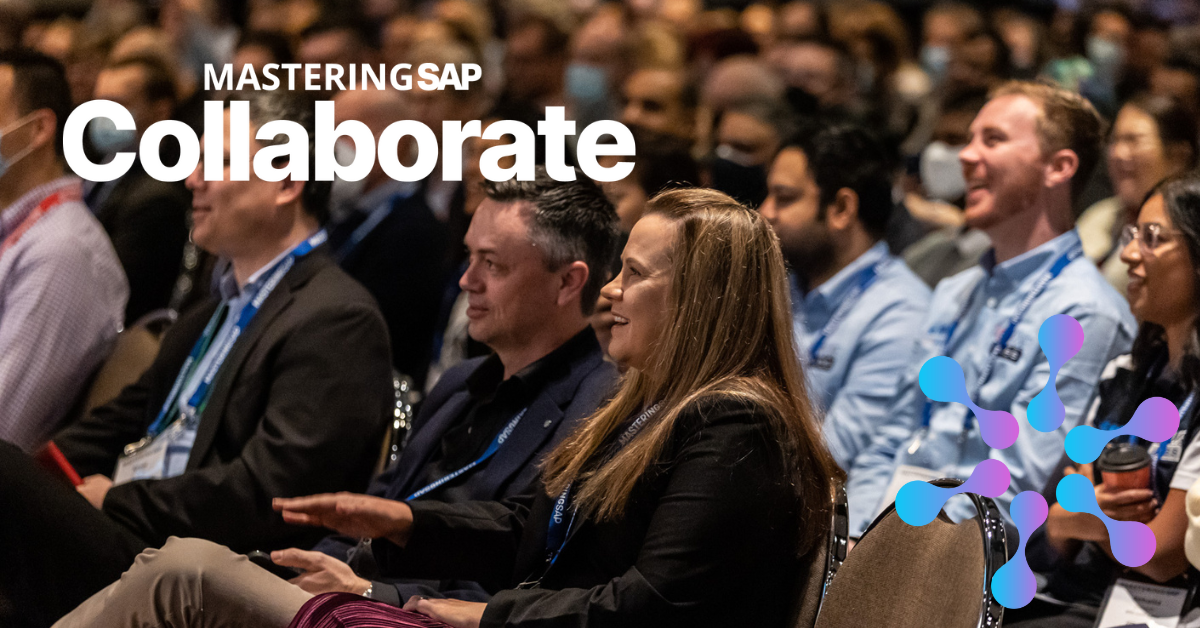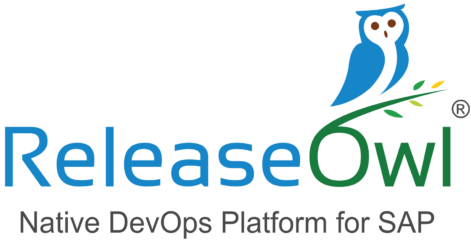SAP Process Design
Filter By
Browse By
- SAP Analytics and AI
- SAP Application Development and Integration
- All SAP Application Development and Integration
- SAP ABAP
- SAP ABAP Development Tools
- SAP ABAP Test Cockpit
- SAP API Management
- SAP BAPI
- SAP Basis
- SAP BRF
- SAP Business Application Studio
- SAP CMS
- SAP Design Studio
- SAP Development Tools
- SAP DevOps
- SAP EAI
- SAP EDI
- SAP Extension Suite
- SAP Fiori
- SAP Fiori Elements
- SAP Integration Suite
- SAP Low Code Application Development
- SAP Low Code Automation
- SAP Netweaver
- SAP Release Management
- SAP UI5
- SAP Web Application Server
- SAP Web IDE
- SAP Business Process Management
- SAP Center of Excellence
- SAP CIO
- SAP Customer Experience
- SAP Data and Data Management
- All SAP Data and Data Management
- SAP BW
- SAP BW/4HANA
- SAP Crystal Reports
- SAP Data Archiving
- SAP Data Center
- SAP Data Governance
- SAP Data Integration
- SAP Data Migration
- SAP Data Quality
- SAP Data Services
- SAP Data Strategy
- SAP Data Visualization
- SAP Data Warehouse Cloud
- SAP DMS
- SAP Document Control
- SAP EIM
- SAP ETL
- SAP ETL Tools
- SAP HANA
- SAP HANA Administration
- SAP HANA Deployment Infrastructure
- SAP HANA Studio
- SAP Master Data
- SAP Master Data Governance
- SAP MDM
- SAP Enterprise Architect
- SAP Enterprise Asset Management
- SAP ERP
- SAP Finance
- All SAP Finance
- SAP Accounting
- SAP AR AP
- SAP Asset Accounting
- SAP Billing Systems
- SAP BPC
- SAP BRIM
- SAP Cash Management
- SAP Central Finance
- SAP Controlling
- SAP COPA
- SAP Cost Center Accounting
- SAP e-invoicing
- SAP FICO
- SAP Finance Automation
- SAP Advanced Financial Closing
- SAP Financial Consolidation
- SAP Financial Planning
- SAP FX Risk
- SAP General Ledger
- SAP Global Tax Management
- SAP Hyperion
- SAP Order to Cash
- SAP Payment Processing
- SAP Profitability Analysis
- SAP Rebate Management
- SAP S/4HANA Finance
- SAP Universal Journal
- SAP Governance Risk and Compliance
- SAP Human Capital Management
- SAP Intelligent Technologies
- SAP Platform and Technology
- All SAP Platform and Technology
- SAP Business Technology Platform
- SAP Cloud Connector
- SAP Cloud Integration Platform
- SAP Cloud Migration
- SAP Cloud Platform
- SAP Cloud Providers
- SAP Cloud Strategy
- SAP Container Platform
- SAP Digital Asset Management
- SAP Digital Integration Hub
- SAP Digital Signature
- SAP HANA Enterprise Cloud
- SAP HEC
- SAP Hyperscalers
- SAP Infrastructure
- SAP Messaging
- SAP Smart Forms
- SAP Quality and Testing
- SAP Security
- SAP Spend Management
- SAP Supply Chain Management
- All SAP Supply Chain Management
- SAP APO
- SAP Asset Management
- SAP Business Network
- SAP Digital Manufacturing Cloud
- SAP Digital Twin
- SAP EWM
- SAP IBP
- SAP Inventory Management
- SAP Label Printing
- SAP Logistics
- SAP Manufacturing
- SAP Manufacturing Automation
- SAP MES
- SAP MII
- SAP MM
- SAP MRO
- SAP MRP
- SAP Order Management
- SAP Plant Maintenance
- SAP PLM
- SAP Production Planning
- SAP S&OP
- SAP SD
- SAP SPM
- SAP Supply Chain Planning
- SAP Track and Trace
- SAP Transportation Management
- SAP System Administration
Role of Process Design in Process Transformation
Process transformation is becoming an essential component of digital transformation initiatives. As organizations embark on their digital transformation journey, they realize that process transformation will play a key role. This is also reflected in the importance placed on process transformation in the RISE with SAP offering from SAP. A key component of process transformation is process design or re-design. When organizations plan to leverage advanced automation tools, one of the best practices that they adopt is to make sure that the process design is optimal. A suboptimal process will not extract maximum value from any investment in digital tools like robotic process automation. Process intelligence plays a key role in helping organizations understand how to best design or re-design their processes.
Role of Process Design in Process Transformation
Process transformation is becoming an essential component of digital transformation initiatives. As organizations embark on their digital transformation journey, they realize that process transformation will play a key role. This is also reflected in the importance placed on process transformation in the RISE with SAP offering from SAP. A key component of process transformation is process design or re-design. When organizations plan to leverage advanced automation tools, one of the best practices that they adopt is to make sure that the process design is optimal. A suboptimal process will not extract maximum value from any investment in digital tools like robotic process automation. Process intelligence plays a key role in helping organizations understand how to best design or re-design their processes.
What Is Process Design?
Process design is about identifying the most optimal way to run a process and then structuring or re-structuring the process accordingly. And the starting point of understanding the opportunities to improve and re-engineer processes is by analyzing the data from the current state. This is where process intelligence comes into the picture. Process intelligence, derived through process mining, helps capture current state data and insights. This data can then be leveraged to understand the bottlenecks in the current state, optimal flows, and opportunities to re-engineer segments of the process or the entire end-to-end process. SAPinsider Process Automation SOM research report covers this aspect in detail.
Key Considerations for SAPinsiders
Map and understand process interdependencies. Even when the focus is on designing a specific process, it is critical to understand process interdependencies. Comprehensive business process mapping on key processes needs to occur simultaneously to understand their interdependencies. Build swim-lane-style process maps that clearly illustrate how each process interacts with the other. Leverage best-in-class process mapping and design methodologies like SIPOC diagrams.
Formulate a process visibility strategy. Process visibility remains a key aspect of any process design or redesign. It is also one of the foundational pillars of process intelligence, a tool widely leveraged to identify opportunities for process design or re-design. However, it is important to realistically define what is the desired level of process visibility and evaluate the feasibility of attaining that level of visibility.
Embrace intelligent automation. While many organizations design or re-design processes prior to automation, processes need to be subjected to continuous improvements and analyzed continuously. Technology today allows us to take process automation beyond merely automating manual, non-value-adding tasks. Automation enabled by artificial intelligence and machine learning allows you to stretch the boundaries of process enhancement and move towards building a true intelligent enterprise of the future.
452 results
-

 Premium
Premium
An Introduction to BW Workspaces in 7.3: Increase User Flexibility with Central Oversight
Reading time: 20 mins
Ned Falk describes the functionality behind BW Workspaces, which is new to SAP NetWeaver BW 7.3. It is only available with 7.3 running on SAP HANA or HANA’s predecessor, SAP Business Warehouse Accelerator (BWA). See the tasks the BW back-end global team needs to perform to set up BW Workspaces. Key Concept SAP’s Silvia Bratz...…
-

- SAP Design Studio
 Premium
Premium
How to Use the Bookmarking and Personalization Features of SAP Design Studio
Reading time: 12 mins
SAP Design Studio 1.3 provides the ability to bookmark and personalize dashboards. The designer of the dashboard can integrate these additional functionalities into the design and give them to the consumers of the dashboard, providing them with a personalized viewing experience. Key Concept SAP Design Studio 1.3 gives designers the option to integrate the bookmarking...…
-

 Premium
Premium
Build a Dashboard for Management of Internal Controls
Reading time: 22 mins
Managers often struggle with the timely availability of compliance-related data and the way the information is visualized for analysis and presentation purposes. You can eliminate these problems by following a four-step process to build a management dashboard for SAP’s Management of Internal Controls (MIC) application. You can also use this procedure to build dashboards for...…
-
-

 Premium
Premium
SAP NetWeaver 2004s: What’s New in the BI Front End: Part 2
Reading time: 11 mins
Find out about changes to BEx Suite tools in SAP NetWeaver 2004s. They include improvements to Web-based printing, document management, Information Broadcasting, BEx Analyzer, BEx Query Designer, Web Analyzer, and Web Application Designer. Key Concept BEx Web, a component of the BEx Suite, includes the new BEx Report Designer (discussed in part 1) as well...…
-

- SAP ERP
 Premium
Premium
How to Calculate Net Difference Excluding Exchange Rate Fluctuations
Reading time: 11 mins
Learn how to use a new design and two Business Add-Ins (BAdIs) to dynamically change on the fly the assignment of an exchange rate to a category or period. Key Concept Using object-oriented ABAP SAP Business Planning and Consolidation (BPC), you can change a dimension attribute at run time to compare currency conversion at different...…
-

SAP BusinessObjects Design Studio – A Beginner’s Guide
Reading time: 9 mins
In this blog we take a quick look at the features of Design Studio. We explore the basic functions and also look at the capabilities of this new interesting tool from SAP. Overview Design Studio is a far superior alternative to BEx Web App Designer. In addition to helping you build more dynamic dashboards, it…
-

- SAP ABAP Development Tools
 Premium
Premium
Making Custom Themes Future Ready Using SAP UI Theme Designer
Reading time: 16 mins
Obtain clarity on the steps to follow for applying a custom theme to any SAPUI5/HTML5-based applications both in the cloud and on premise. Learn some best practices for creating custom themes that are future ready and the multiple deployment options of the UI theme designer. Key Concept The UI theme designer is a browser-based tool...…
-
-

 Premium
Premium
Selecting the Right BI Tool: SAP BusinessObjects BI Portfolio and Personas
Reading time: 13 mins
With the acquisition of SAP BusinessObjects a few years back, SAP extended its offerings in the Business Intelligence (BI) area and is now in a position to offer companies a broad range of BI products. With this larger set of BI clients also comes more complexity when choosing the right BI tool based on your...…
-

 Premium
Premium
Experience the Next Level of Forecasting the Future Using Xcelsius Dashboard Applications
Reading time: 20 mins
Xcelsius dashboard applications present facts graphically, providing insight that helps in making business decisions. However, the future is uncertain and decisions should take that into account. Learn how Xcelsius can transform business facts into statistically valid probability models that give a more accurate view of the future using Monte Carlo simulation techniques. Sample code is...…
-

 Premium
Premium
Increase Your BI Efficiency by Using Design-Centric Development Methodology
Reading time: 23 mins
Adapting your BI data warehouse environment to use a business intelligence design-centric development process allows you to incorporate best practices as a standard part of data modeling and query design. Learn about the four phases in a design-centric development implementation that you can apply to your SAP NetWeaver BI system and the steps required for...…
Featured Insiders
-

Sparsh J Varsani
SAP Consultant
-

Craig L. Brown, Sr.
Chief Transformation Architect, Xceleon, LLC
-

Javaid Awan
SAP
Become a Member
Unlimited access to thousands of resources for SAP-specific expertise that can only be found here.
Become a Partner
Access exclusive SAP insights, expert marketing strategies, and high-value services including research reports, webinars, and buyers' guides, all designed to boost your campaign ROI by up to 50% within the SAP ecosystem.
Upcoming Events
Related Vendors
Your request has been successfully sent


